-
 Bitcoin
Bitcoin $94,549.4792
-0.20% -
 Ethereum
Ethereum $1,814.6073
-0.07% -
 Tether USDt
Tether USDt $0.9999
-0.04% -
 XRP
XRP $2.1325
-1.60% -
 BNB
BNB $599.1072
1.83% -
 Solana
Solana $146.2701
0.71% -
 USDC
USDC $1.0000
-0.02% -
 Dogecoin
Dogecoin $0.1703
-0.72% -
 TRON
TRON $0.2476
0.00% -
 Cardano
Cardano $0.6613
-2.33% -
 Sui
Sui $3.3801
3.93% -
 Chainlink
Chainlink $13.6419
-2.28% -
 Avalanche
Avalanche $19.6800
-1.77% -
 UNUS SED LEO
UNUS SED LEO $8.6644
-4.59% -
 Stellar
Stellar $0.2578
-3.74% -
 Shiba Inu
Shiba Inu $0.0...01267
-0.67% -
 Toncoin
Toncoin $2.9659
-1.86% -
 Hedera
Hedera $0.1732
-2.33% -
 Bitcoin Cash
Bitcoin Cash $353.2159
-1.53% -
 Hyperliquid
Hyperliquid $20.2920
0.86% -
 Litecoin
Litecoin $83.3490
-2.64% -
 Polkadot
Polkadot $3.9205
-0.87% -
 Dai
Dai $1.0001
0.01% -
 Monero
Monero $278.0779
-0.17% -
 Bitget Token
Bitget Token $4.2978
-0.79% -
 Ethena USDe
Ethena USDe $1.0005
0.01% -
 Pi
Pi $0.5878
-0.82% -
 Pepe
Pepe $0.0...07905
-3.51% -
 Bittensor
Bittensor $374.8447
8.49% -
 Uniswap
Uniswap $4.9616
-1.43%
What is the token economics model of Stacks(STX)?
Stacks (STX) employs a unique token economics model featuring a capped supply, fair distribution, staking rewards, and hybrid consensus to incentivize participation and secure its blockchain ecosystem built on Bitcoin.
Dec 07, 2024 at 06:18 pm
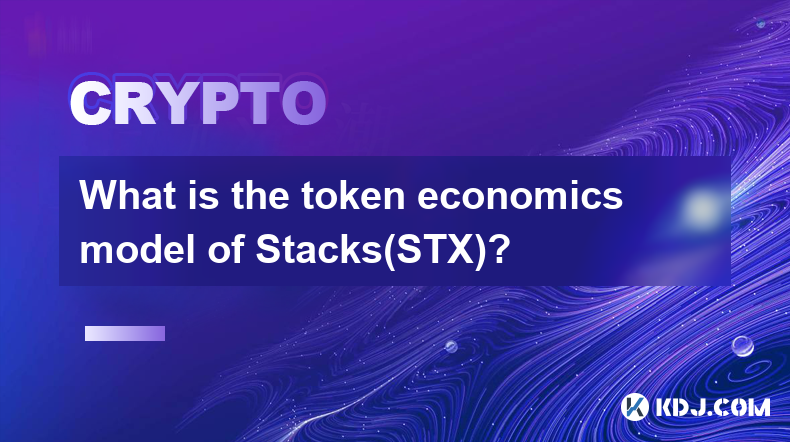
Understanding the Stacks (STX) Token Economics Model
Introduction
Stacks (STX) is a revolutionary blockchain that leverages the security and immutability of Bitcoin to enable the development of smart contracts and decentralized applications (dApps) without compromising Bitcoin's inherent values. At its core lies a unique token economics model that governs the STX token, incentivizing participation, securing the network, and facilitating the growth of the Stacks ecosystem.
1. Token Supply
The total supply of STX tokens is capped at 1,818,284,513 STX, ensuring scarcity and long-term value appreciation for token holders. The supply is divided into three primary categories:
- Stacking Rewards (65%): Reserved for users who stake their STX tokens, contributing to the network's security and stability.
- Ecosystem Growth and Development (15%): Allocated to fund ecosystem initiatives, developer grants, and strategic partnerships.
- Initial Investors and Team (20%): Comprising tokens distributed to early investors and the Stacks team, recognizing their contributions to the project's success.
2. Token Distribution
STX tokens were initially distributed through a fair launch model that fairly allocated tokens to the community, removing the need for expensive and exclusive token sales. The distribution process consisted of the following steps:
- Genesis Block Distribution (5%): A predefined number of STX tokens were allocated to the Stacks Foundation and early contributors at the time of the platform's launch.
- Proof-of-Transfer Tokens (25%): Users could claim free STX tokens by transferring BTC to the Stacks blockchain during a specified period, incentivizing community participation and liquidity.
- Stacking Rewards (65%): As users stake their STX tokens, they earn additional STX as rewards, fostering network security and token adoption.
3. Staking Mechanism
Staking is a crucial mechanism in the Stacks ecosystem, contributing to the platform's security while rewarding token holders. STX holders can stake their tokens through the Hiro Wallet, securing the network against attacks and earning rewards in return.
- Block Producers: Miners who create new blocks on the Stacks blockchain are responsible for verifying and processing transactions. To become a block producer, users must stake a minimum amount of STX.
- Consensus Protocol: Stacks utilizes the Proof-of-Transfer (PoX) consensus protocol, where block producers are selected based on the amount of STX they stake. This mechanism incentivizes honest behavior and further strengthens the network's security.
- Reward Distribution: Block producers receive STX rewards for contributing to the network's security, with staking rewards distributed proportional to the amount of STX staked.
4. Network Security
The Stacks blockchain is secured through a combination of proof-of-transfer and Bitcoin's proof-of-work, ensuring a robust and immutable base layer for smart contract execution.
- Hybrid Consensus: Stacks combines PoX with Bitcoin's PoW to achieve a higher level of security. The PoX protocol secures the Stacks layer, while the PoW of Bitcoin serves as a foundation for anchoring Stacks transactions on the Bitcoin blockchain.
- Finality: Transactions on the Stacks blockchain are considered final after receiving a certain number of confirmations. Bitcoin serves as the "anchor" for Stacks blocks, providing indelible validation to secure the finality of transactions.
- Immutability: Anchored Stacks blocks become part of the Bitcoin blockchain, making them immutable and tamper-proof. This linkage adds an additional layer of security, ensuring the integrity of transactions and preventing reversals.
5. Role in the Stacks Ecosystem
The STX token plays a multifaceted role within the Stacks ecosystem, fueling various aspects of the platform's operations and facilitating growth:
- Transaction Fees: STX is the primary means of paying transaction fees on the Stacks blockchain, ensuring the network remains sustainable and accessible.
- Governance: STX holders have voting rights in the Stacks Improvement Process (SIP), enabling community participation in shaping the platform's future through proposals and voting.
- Reward Distribution: Stacking STX yields rewards in the form of additional STX tokens, incentivizing users to participate in network security and ecosystem growth.
- Developer Support: The Stacks ecosystem supports a vibrant developer community that benefits from STX grants and funding opportunities.
Disclaimer:info@kdj.com
The information provided is not trading advice. kdj.com does not assume any responsibility for any investments made based on the information provided in this article. Cryptocurrencies are highly volatile and it is highly recommended that you invest with caution after thorough research!
If you believe that the content used on this website infringes your copyright, please contact us immediately (info@kdj.com) and we will delete it promptly.
- Christian Thompson, Managing Director of the Sui Foundation, stated that bipartisan U.S. stablecoin legislation will be a powerful mechanism for driving capital formation and retail onboarding into Web3 ecosystems.
- 2025-05-06 00:20:12
- Robert Kiyosaki Warns of the Biggest Market Crash in History and Urges Investment in Bitcoin.
- 2025-05-06 00:20:12
- Toronto, ON – May 5 2025 @ 9 AM ET – ETHToronto and ETHWomen to Commemorate the 10-Year Anniversary of Ethereum
- 2025-05-06 00:15:12
- Bonk (BONK), the largest Solana-based dog-themed meme coin, is the third-fastest-growing crypto today
- 2025-05-06 00:15:12
- TAO Price Prepares for a Supply Shock — What Happens When the Bittensor Halvening Hits?
- 2025-05-06 00:10:11
- Cardano (ADA) Closing the Market Cap Gap With Dogecoin (DOGE)
- 2025-05-06 00:10:11
Related knowledge
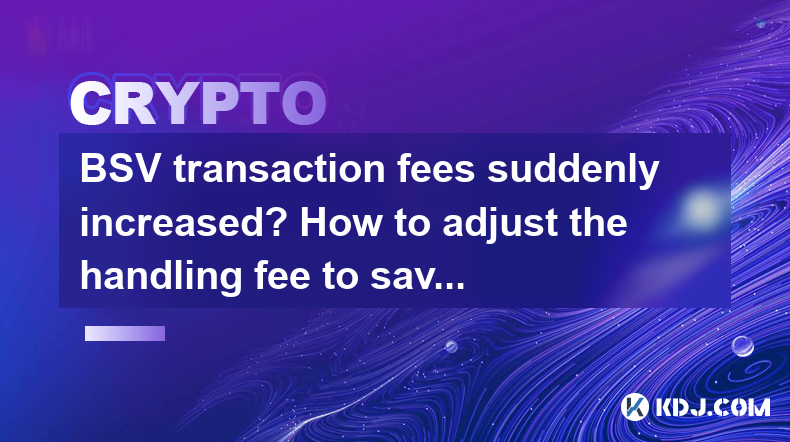
BSV transaction fees suddenly increased? How to adjust the handling fee to save costs?
May 02,2025 at 06:42am
Understanding BSV Transaction FeesBSV (Bitcoin SV) aims to fulfill the original vision of Bitcoin as a peer-to-peer electronic cash system. One of the key elements in this system is the transaction fee, which compensates miners for including transactions in the blockchain. Recently, users have noticed a sudden increase in BSV transaction fees, which can...
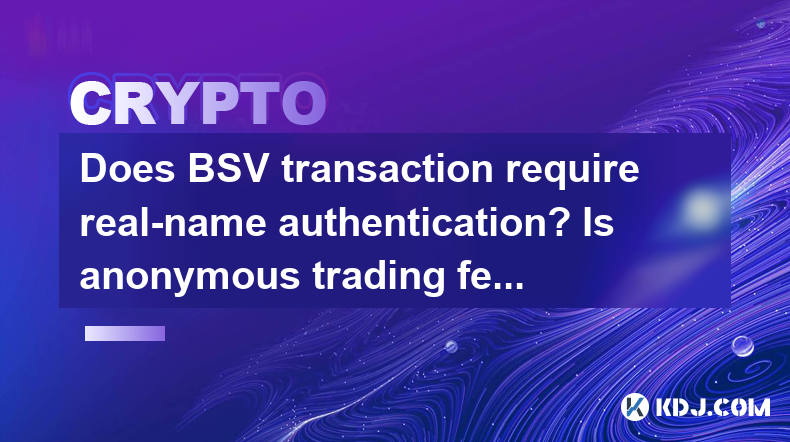
Does BSV transaction require real-name authentication? Is anonymous trading feasible?
May 03,2025 at 03:14pm
The question of whether BSV (Bitcoin SV) transactions require real-name authentication and whether anonymous trading is feasible is a complex one, deeply intertwined with the broader dynamics of cryptocurrency regulations and blockchain technology. Let's delve into these aspects to provide a comprehensive understanding. Understanding BSV and Its Transac...
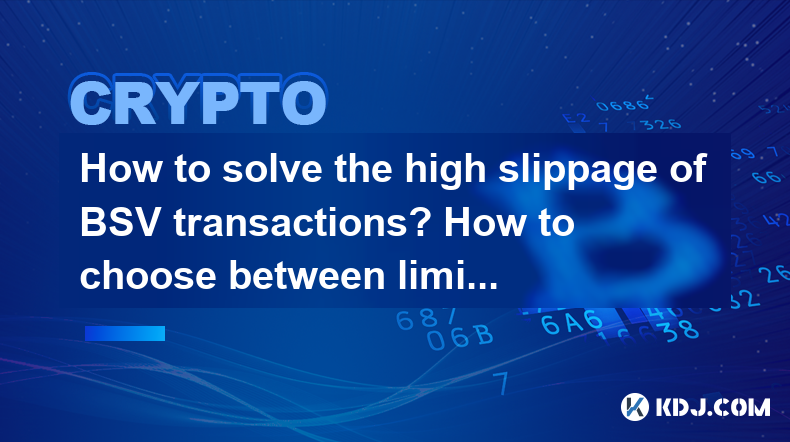
How to solve the high slippage of BSV transactions? How to choose between limit and market orders?
May 02,2025 at 09:01pm
High slippage can be a significant concern for traders dealing with Bitcoin SV (BSV) transactions. Slippage refers to the difference between the expected price of a trade and the price at which the trade is actually executed. This can occur in fast-moving markets or when there is low liquidity. To address this issue, understanding the mechanics of slipp...

What if BSV transactions are frozen? How to contact customer service to unblock the account?
May 05,2025 at 05:01am
When dealing with Bitcoin SV (BSV) transactions, encountering issues such as frozen transactions can be a stressful experience. This article will guide you through the process of understanding why BSV transactions might be frozen and how to contact customer service to unblock your account. We will cover the reasons behind frozen transactions, steps to t...
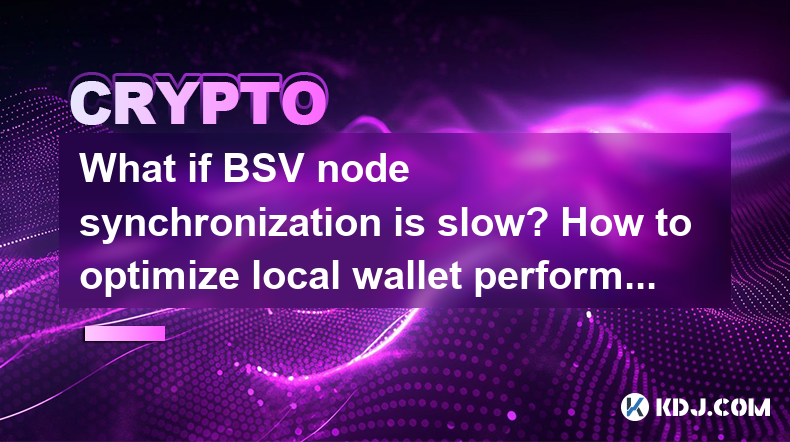
What if BSV node synchronization is slow? How to optimize local wallet performance?
May 03,2025 at 04:35pm
When dealing with BSV (Bitcoin SV) node synchronization and optimizing local wallet performance, it's crucial to understand the underlying issues and implement effective solutions. Slow synchronization and poor wallet performance can significantly hinder your experience with the BSV network. This article will delve into the reasons behind slow BSV node ...
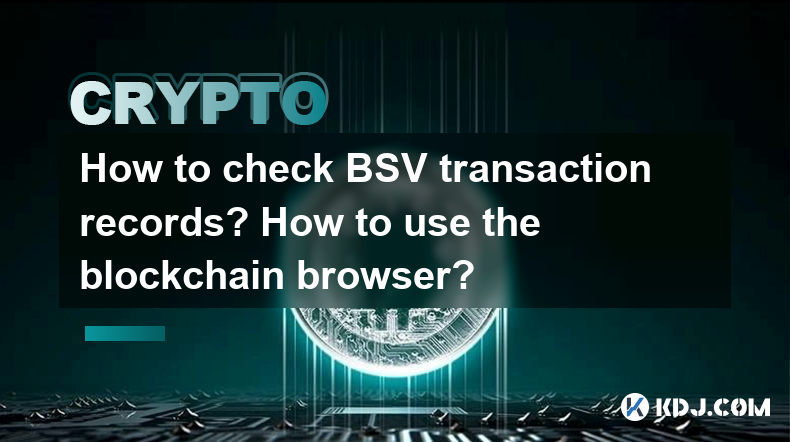
How to check BSV transaction records? How to use the blockchain browser?
May 03,2025 at 06:50am
Checking BSV (Bitcoin SV) transaction records and using a blockchain browser are essential skills for anyone involved in the cryptocurrency space. These tools allow you to verify transactions, check wallet balances, and understand the flow of funds on the blockchain. This article will guide you through the process of checking BSV transaction records and...

BSV transaction fees suddenly increased? How to adjust the handling fee to save costs?
May 02,2025 at 06:42am
Understanding BSV Transaction FeesBSV (Bitcoin SV) aims to fulfill the original vision of Bitcoin as a peer-to-peer electronic cash system. One of the key elements in this system is the transaction fee, which compensates miners for including transactions in the blockchain. Recently, users have noticed a sudden increase in BSV transaction fees, which can...

Does BSV transaction require real-name authentication? Is anonymous trading feasible?
May 03,2025 at 03:14pm
The question of whether BSV (Bitcoin SV) transactions require real-name authentication and whether anonymous trading is feasible is a complex one, deeply intertwined with the broader dynamics of cryptocurrency regulations and blockchain technology. Let's delve into these aspects to provide a comprehensive understanding. Understanding BSV and Its Transac...

How to solve the high slippage of BSV transactions? How to choose between limit and market orders?
May 02,2025 at 09:01pm
High slippage can be a significant concern for traders dealing with Bitcoin SV (BSV) transactions. Slippage refers to the difference between the expected price of a trade and the price at which the trade is actually executed. This can occur in fast-moving markets or when there is low liquidity. To address this issue, understanding the mechanics of slipp...

What if BSV transactions are frozen? How to contact customer service to unblock the account?
May 05,2025 at 05:01am
When dealing with Bitcoin SV (BSV) transactions, encountering issues such as frozen transactions can be a stressful experience. This article will guide you through the process of understanding why BSV transactions might be frozen and how to contact customer service to unblock your account. We will cover the reasons behind frozen transactions, steps to t...

What if BSV node synchronization is slow? How to optimize local wallet performance?
May 03,2025 at 04:35pm
When dealing with BSV (Bitcoin SV) node synchronization and optimizing local wallet performance, it's crucial to understand the underlying issues and implement effective solutions. Slow synchronization and poor wallet performance can significantly hinder your experience with the BSV network. This article will delve into the reasons behind slow BSV node ...

How to check BSV transaction records? How to use the blockchain browser?
May 03,2025 at 06:50am
Checking BSV (Bitcoin SV) transaction records and using a blockchain browser are essential skills for anyone involved in the cryptocurrency space. These tools allow you to verify transactions, check wallet balances, and understand the flow of funds on the blockchain. This article will guide you through the process of checking BSV transaction records and...
See all articles




















































































